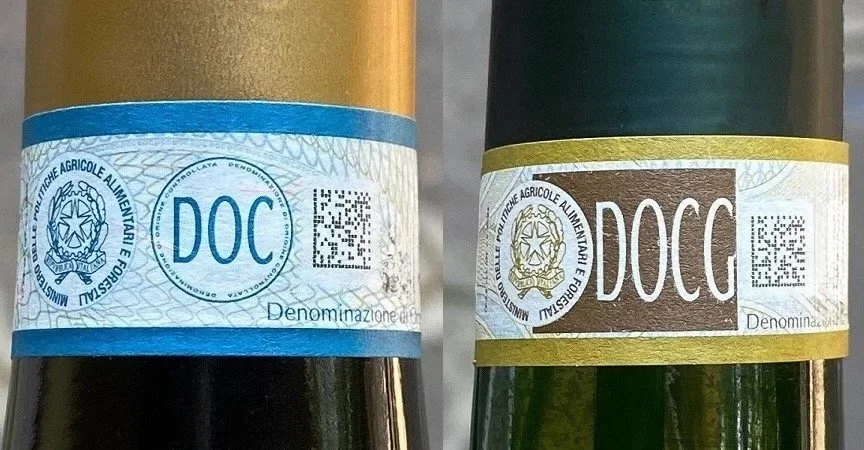In Italian wines, DOC and DOCG are classifications that signify different attributes:
DOC – Denominazione di Origine Controllata (Controlled Designation of Origin):
This classification was established in 1963
It ensures that wines are made in a specific region using specific grape varieties and production methods.
Regulations cover the permitted grape types, yield limits, aging requirements, and production methods.
Bottles will have the DOC classification on a band around neck of the bottle
There are hundreds of DOC zones in Italy.
Think of DOC as a guarantee of geographic origin and quality control but with some flexibility.
DOCG – Denominazione di Origine Controllata e Garantita (Controlled and Guaranteed Designation of Origin):
This is a higher level classification than DOC that was established in 1980.
It has all the DOC requirements plus stricter rules on production, yield, and quality.
Wines must pass analytical tests and taste tests before being approved for sale.
Each bottle must have a numbered government seal around the neck to prevent counterfeiting.
There are only around 70 appellations that are officially recognized as DOCG in Italy.
The DOCG classification is reserved for wines of higher quality and geographic significance. But, that does not necessarily mean that they are prohibitively expensive.
So, next time you are looking to pick up some Italian wine, be sure to also check the band around the neck of the bottle to see if it is DOC or DOCG. Cheers!


